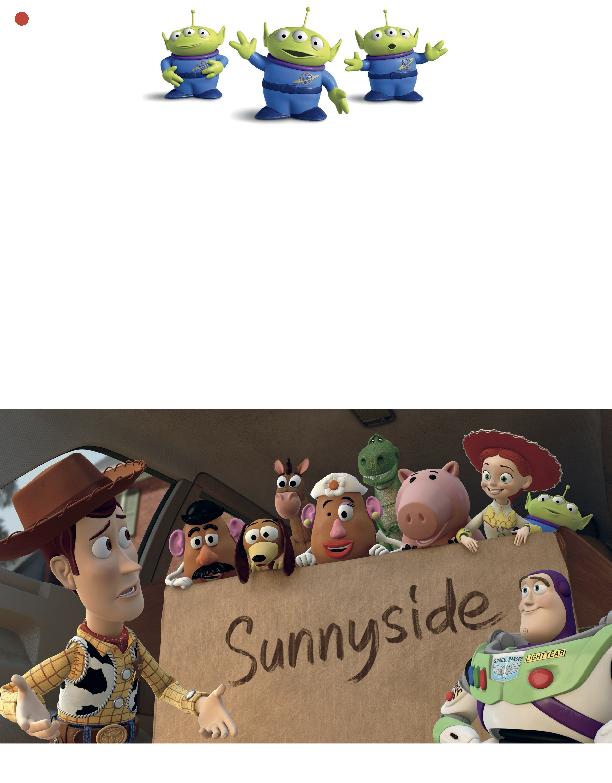
thing happens in the right
order." To hear Arndt describe
it, even at the end of the proj-
ect, the scribe feels his prob-
lems within this highly
expository scene were never re-
ally completely solved. "I actually went back
and counted more than 60 drafts of it, and it
still feels like the least-great scene in the movie
to me," he laments. "That was my Waterloo. It
does what it needs to do, but it doesn't sing
the way other scenes in the movie do."
true for the third installment of its landmark
franchise. But if one is being held to the fact
that these characters are only toys, their
problems would seem to be limited. Arndt
recognized this obstacle immediately, partic-
ularly when it came to Woody, the central
character of all three films. Arndt explains
Woody's personal development by compar-
ing his emotional progress in the films with
that of a child. "In Toy Story, Woody is learn-
ing to share the spotlight with Buzz," he ex-
plains. "He's like a child who gets a new
sibling and has to realize he doesn't always
ally with someone who is 5 or 6 years old.
That tracks with a child who is 8 to 10 years
old." With the plot devised for Toy Story 3,
Woody needed to progress to a more mature
sentiment -- that of a teenager -- in order
for the film to have the correct impact.
"Woody learns about the impermanence of
things and the necessity for letting go and
moving on," Arndt says. "So there's an arc to
his development across the trilogy. Even
though there are common elements in all
three films, I do think we're telling a differ-
ent story in each of them, as well as one big
over-arching story that spans the trilogy."
cast of characters and balancing moments
between both the trilogy mainstays and the
new toys we are introduced to in this film.
ing up with their natural reactions to each new
situation was fun. But at the end of the day,
some characters were just going to get more
screen time than others. "When you have so
many characters, you're invariably making a
trade between variety and depth," he contin-
ues. "While I couldn't give everyone their own
arc or subplot -- although we did cram a lot
of B-lines into 90 minutes -- you want to
make sure that each character, at the very least,
is true to himself."
"Pixar process," a collaborative effort between
great filmmakers who make sure each of the
studio's releases is up to par with its predeces-
sors. Chief among these individuals is the
Pixar "Brain Trust" -- a group that includes
Lasseter, Stanton, Docter, The Incredibles' Brad